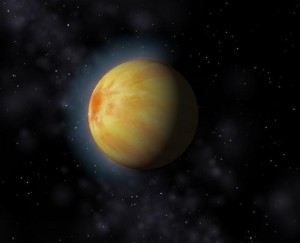For the majority of exoplanets, astronomers study the planets via indirect means, by looking for their gravitational tugs on their host stars or the shadows they cast when occult their stars. Consequently, the things astronomers learn about exoplanets often involve systematic uncertainties, usually related to uncertainties about our knowledge of the stellar properties.
For example, by measuring a planet’s gravitational tugs on its star, astronomers can estimate the planet’s mass but only if they also know the star’s mass. It’s a little like watching two dancers spinning hand-in-hand, with one in black and the other in white, and then trying to estimate the weight of the dancer in black based on how the dancer in white spins.
But in last week’s journal club, we discussed a recent study from Martins and colleagues that may have thrown white clothes on one of the most famous exoplanets, 51 Pegasi b, and revealed its dance moves.
51 Peg was the first exoplanet discovered around a Sun-like star. It’s a gas giant, like Jupiter, but unlike Jupiter, it orbits its host star every four days and is almost 100 times closer to its host star than Jupiter is to our Sun.
Martins and colleagues conducted ground-based spectroscopic observations of the 51 Peg system as the planet revolved about its host star. In principle, this orbital motion causes the spectral features imprinted on light reflected from the planet’s atmosphere to be Doppler-shifted.
Detecting the light reflected from a planet and resolving it spectrally is a bit like trying to discern the color of a football fan’s t-shirt against the glare of stadium lights, only much harder.
However, Martins and colleagues found tentative indications of light reflected from 51 Peg b’s atmosphere. By modeling the Doppler-shifting of the subtle spectral signals, they were able to estimate the planet’s mass (0.46 times Jupiter’s) and its radius (almost twice Jupiter’s, if it’s about twice as reflective as Jupiter).
Journal club attendees included Jennifer Briggs, Nathan Grigsby, Emily Jensen, and Liz Kandziolka.
